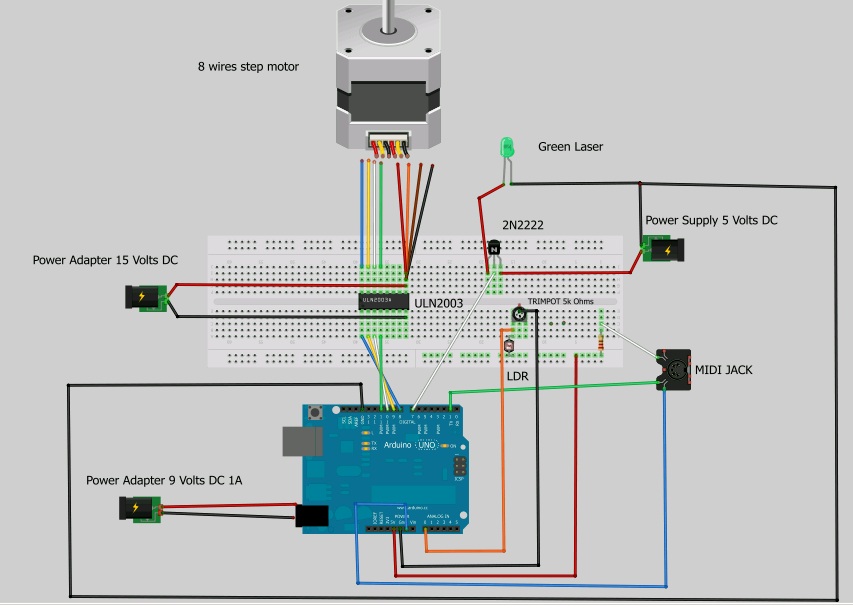HIMNL9
0
- Joined
- May 26, 2009
- Messages
- 5,318
- Points
- 0
.....
The upside to using a camera is you can use things like the position of your hand up and down the beam to adjust things like pitch.
BTW, this can be done, in a certain range, also with stepper motor configurations, using "line positional" (or the name is "row" ?) sensors, and a shutter "slith".
the reflex on the hand falls on a different point of the "line" sensor for each position of the hand, so this can add some sort of extra control
Also, if "line" sensor is not readily available (or too high cost) , it can be "DYIed" someway using few cheapy photodiodes
EDIT: about diffraction gratings, they have 2 "bad" things to consider, imho ..... first, the beam is divided, so for have the same visibility of a, say, 50mW beam module, for 10 strings you need a 500mW beam ..... and also, you cannot regulate the distance between the beams ..... true that with stepper motors that distance is not freely regulable (opposite than with real galvos), but still can be varied if needed, where with diffraction gratings this cannot be done (ok, ok, you can use a different grating for get different distances, but is a bit impractical, and need a change in the software that track the position of the beam, when you change the grating)
Last edited:




